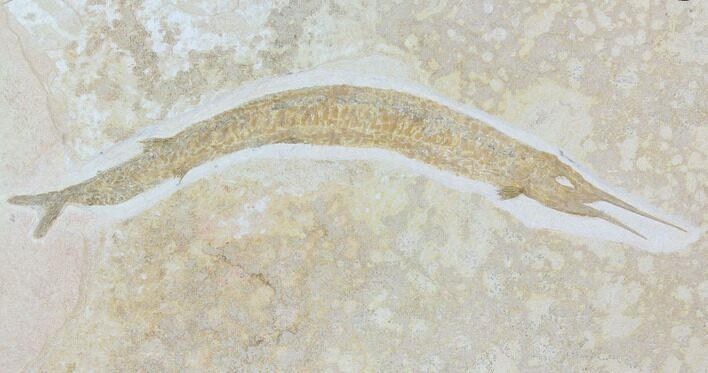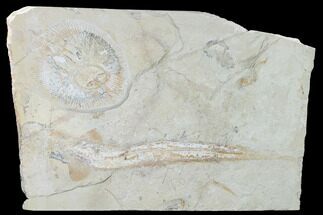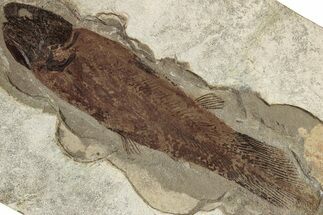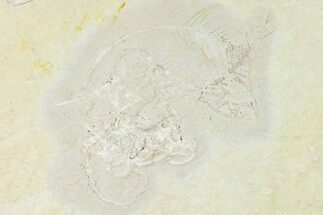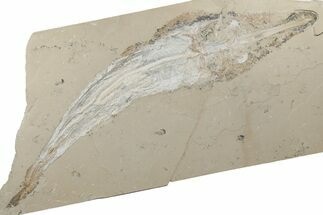This Specimen has been sold.
18.3" Jurassic, Predatory Fish (Aspidorhynchus) - Solnhofen Limestone
This is an incredible 18.3" fossil fish (Aspidorhynchus) from the Solnhofen Limestone, Eichstatt, Germany. It is well preserved and shows amazing detail. Scales, fins, and teeth are all visible. Under magnification, the details become more striking. The shale is stable and ready for display.
Aspidorhynchus is an extinct genus of fish from the Jurassic and Cretaceous periods. It was a slender, high speed predator about two feet long. It had a long pointed snout lined with sharp teeth for catching prey. The upper jaw extended past the lower and ended in a bony spike. Aspidorhynchus can be identified by its long body and pointed bill, heavy scales and symetric tail. it was related to the modern bowfin.
Aspidorhynchus is an extinct genus of fish from the Jurassic and Cretaceous periods. It was a slender, high speed predator about two feet long. It had a long pointed snout lined with sharp teeth for catching prey. The upper jaw extended past the lower and ended in a bony spike. Aspidorhynchus can be identified by its long body and pointed bill, heavy scales and symetric tail. it was related to the modern bowfin.
The Solnhofen limestone is a famous Upper Jurassic lagerstätte in Germany. It is where one of the most famous fossils of all time, Archaeopteryx, was found. The fine-grained limestone makes excellent building material, which has led to heavy quarrying over the past two centuries. In the process, some spectacular fossils were unearthed, including fossil dragonflies, fish, pterosaurs, shrimp, horseshoe crabs, and many more.
This area represents an ancient archipelago at the edge of a sea. Due to high salt content, the lowest levels in the water column could not support much life and were largely devoid of oxygen. This lack of oxygen and scavengers on the bottom of the sea led to beautiful fossil preservation.
This area represents an ancient archipelago at the edge of a sea. Due to high salt content, the lowest levels in the water column could not support much life and were largely devoid of oxygen. This lack of oxygen and scavengers on the bottom of the sea led to beautiful fossil preservation.
SPECIES
Aspidorhynchus sp.
LOCATION
Eichstatt, Germany
FORMATION
Solnhofen Limestone
SIZE
18.3" fish, 21.5 x 11.2" limestone
CATEGORY
SUB CATEGORY
ITEM
#113746
We guarantee the authenticity of all of our specimens.
 Reviews
Reviews




